This article needs additional citations for verification .(August 2019) |

Augustin-Louis Belle (1757, Paris - 12 January 1841, Paris) was a French history painter in the Classical style. He also created some portraits.
This article needs additional citations for verification .(August 2019) |

Augustin-Louis Belle (1757, Paris - 12 January 1841, Paris) was a French history painter in the Classical style. He also created some portraits.
He came from a long line of painters; including his father Clément Belle, grandfather Alexis Simon Belle and great-grandfather, Jean-Baptiste Belle (before 1642-1703).
He was awarded second prize in the Prix de Rome of 1783 for his "Parable of the Prodigal Son". However, after he went to Rome, he was unable to enter the Academy of France due to lack of space. It was not until 1785 that he was given room and board, courtesy of his relative, the engraver Charles-Nicolas Cochin, who exerted his influence to get him in. At the time, this was kept secret. For some unknown reason, his lodgings were searched during the affair involving Count Cagliostro. [1] He left Rome shortly thereafter, in 1790.
While there, he sent home only one painting; "Tobias Giving Sight to His Father" (1788).
Upon returning to France, he exhibited the "Marriage of Ruth and Boaz" in 1791. He was appointed director of the Gobelins Manufactory in 1793. As one of his first acts, he gathered together tapestries that contained Royal coats-of-arms and other symbols of the Monarchy and burned them at the Liberty Tree , in what he considered to be a show of support for the Revolution. He was also able to negotiate and come to terms with the workers at the Manufactory who had gone on strike to protest being paid in assignats.
When the position of Director was abolished, he resumed painting; specializing in subjects from antiquity. In 1806, he became Chief Inspector at the Manufactory, succeeding his father, who had held the position since 1755. He remained there for only ten years, however, resigning in 1816 during the early years of the Bourbon Restoration. After that time, he apparently retired from painting.
![]() Media related to Augustin-Louis Belle at Wikimedia Commons
Media related to Augustin-Louis Belle at Wikimedia Commons

Jacint Rigau-Ros i Serra, known in French as Hyacinthe Rigaud, was a Catalan-French baroque painter most famous for his portraits of Louis XIV and other members of the French nobility.

The Gobelins Manufactory is a historic tapestry factory in Paris, France. It is located at 42 avenue des Gobelins, near Les Gobelins métro station in the 13th arrondissement of Paris. It was originally established on the site as a medieval dyeing business by the family Gobelin.

Anne-Louis Girodet de Roussy-Trioson, also known as Anne-Louis Girodet-Trioson or simply Girodet, was a French painter and pupil of Jacques-Louis David, who participated in the early Romantic movement by including elements of eroticism in his paintings. Girodet is remembered for his precise and clear style and for his paintings of members of the Napoleonic family.

Léon Joseph Florentin Bonnat was a French painter, Grand Officer of the Légion d'honneur and professor at the Ecole des Beaux Arts.
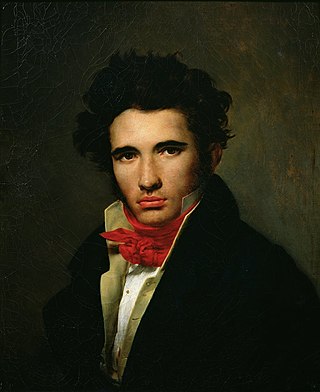
Léon Cogniet was a French history and portrait painter. He is probably best remembered as a teacher, with more than one hundred notable students.
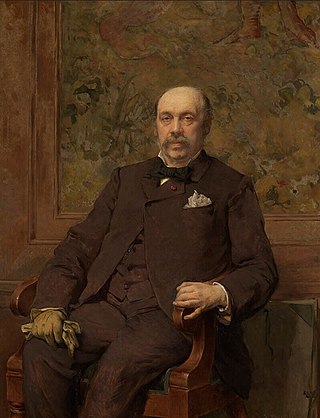
Jean-François Portaels or Jan Portaels was a Belgian painter of genre scenes, biblical stories, landscapes, portraits and orientalist subjects. He was also a teacher and director of the Academy of Fine Arts of Ghent and the Académie Royale des Beaux-Arts in Brussels. He is regarded as the founder of the Belgian Orientalist school. He was praised in his time as the premier painter of 'everyday elegance and feminine grace'. Through his art, teaching and his leadership of the Académie Royale in Brussels he exerted an important influence on the next generation of Belgian artists, including his pupil Théo van Rysselberghe.

François Pascal Simon Gérard, titled as Baron Gérard in 1809, was a prominent French painter. He was born in Rome, where his father occupied a post in the house of the French ambassador, and his mother was Italian. After he was made a baron of the Empire in 1809 by Emperor Napoleon, he was known formally as Baron Gérard.

Louis-Jean-François Lagrenée was a French rococo painter and student of Carle van Loo. He won the Grand Prix de Rome for painting in 1749 and was elected a member of the Académie royale de peinture et de sculpture in 1755. His younger brother Jean-Jacques Lagrenée was also a painter.
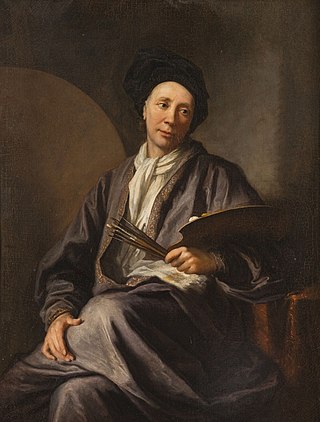
Bon Boullogne was a French painter.

Jean-Baptiste Oudry was a French Rococo painter, engraver, and tapestry designer. He is particularly well known for his naturalistic pictures of animals and his hunt pieces depicting game. His son, Jacques-Charles Oudry, was also a painter.

Pieter Boel or Peeter Boel was a Flemish painter, printmaker and tapestry designer. He specialised in lavish still lifes and animal paintings. He moved to Paris, where he worked in the gobelin factory and became a painter to the king. Pieter Boel revolutionized animal painting by working directly from live animals in a natural setting. He thus arrived at representations of animals showing them in their natural, characteristic poses. He had many followers in France.
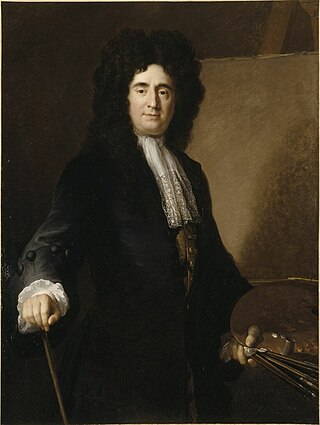
François de Troy was a French painter and engraver who became principal painter to King James II in exile at Saint-Germain-en-Laye and Director of the Académie Royale de peinture et de sculpture.

Alexis Simon Belle was a French portrait painter, known for his portraits of the French and Jacobite nobility. As a portrait artist, Belle's style followed that of his master François de Troy, Hyacinthe Rigaud, and Nicolas de Largillière. He was the master of the painter Jacques-André-Joseph-Camelot Aved (1702–1766).

Joseph Parrocel was a French Baroque painter, best known for his paintings and drawings of battle scenes.
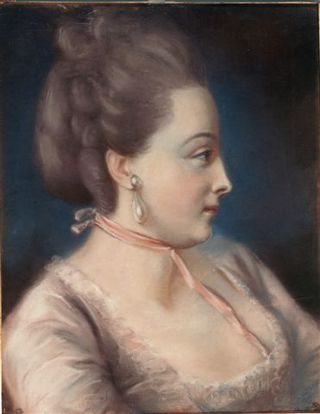
Michelle Sentuary, married name Jean-Cyrille Guesnon de Bonneuil, was a French overseas agent during the French Revolution and First French Empire. Inspiring André Chénier and others, she was a lady "celebrated for her beauty and her agreeable spirit" according to the formula of Charles de Lacretelle himself a friend of Chénier. She stands for thousands of women in modern and contemporary historiography, and has had several biographies in biographical dictionaries. She was the mother of Amédée Despans-Cubières.
Jean-Charles Tardieu, also called "Tardieu-Cochin" was a successful French painter during the ages of Napoleon and of the Bourbon Restoration. His work was primarily historical, but also included landscapes, portraits and religious subjects.

Jacques-Nicolas Tardieu, called "Tardieu fils" or "Tardieu the younger", was a French engraver.
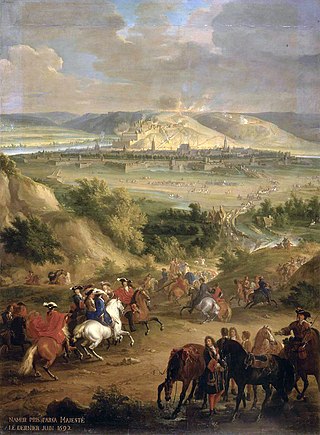
Jean-Baptiste Martin, known as "Martin des Batailles" was a French painter, decorator and designer who specialized in drawings for tapestries. He was best known for battle scenes, hence his nickname.

The Louis XIV style or Louis Quatorze, also called French classicism, was the style of architecture and decorative arts intended to glorify King Louis XIV and his reign. It featured majesty, harmony and regularity. It became the official style during the reign of Louis XIV (1643–1715), imposed upon artists by the newly established Académie royale de peinture et de sculpture and the Académie royale d'architecture. It had an important influence upon the architecture of other European monarchs, from Frederick the Great of Prussia to Peter the Great of Russia. Major architects of the period included François Mansart, Jules Hardouin Mansart, Robert de Cotte, Pierre Le Muet, Claude Perrault, and Louis Le Vau. Major monuments included the Palace of Versailles, the Grand Trianon at Versailles, and the Church of Les Invalides (1675–1691).

Clément Louis Marie Anne Belle was a French painter and tapestry designer.